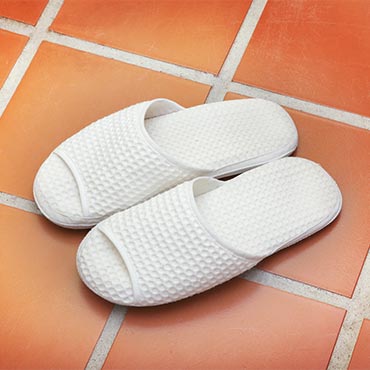Ceramic/Porcelain: Terra Cotta Floor Tile

Terra Cotta Floor Tile: A Timeless Choice for Modern Design
Terra Cotta, an enduring material in the realm of floor tiles, has seamlessly transitioned from its historical roots to a staple in contemporary home decor and interior design. Its journey from ancient building material to a cherished element in modern homes is a testament to its timeless appeal.
Historical Context: A Rich Legacy
Terra Cotta, which means "baked earth" in Italian, has been used for centuries. Initially, it served more functional purposes in construction, but over time, it has evolved into a key design feature in homes and public spaces. Its rustic charm and warm tones have made it a favorite among designers and homeowners alike.
Types and Features: Diversity in Design
The diversity of Terra Cotta Floor Tiles lies in their types, finishes, sizes, and shapes. Handmade tiles offer a unique, artisanal quality, each piece distinct with slight variations in color and texture. Machine-made tiles provide uniformity and precision. The finishes range from glazed for a glossy look to unglazed, retaining the natural, earthy feel of the clay. Available in an array of sizes and shapes, from traditional squares to sophisticated hexagons, Terra Cotta adapts to various design needs.
Design Flexibility: Aesthetic Versatility
Terra Cotta Floor Tiles are celebrated for their versatility in design styles. In a rustic setting, their natural, earthy look brings warmth and coziness. In modern spaces, Terra Cotta can create a striking contrast with clean lines and minimalistic decor. The tiles work beautifully with a range of color palettes, from neutral tones to vibrant hues, offering endless possibilities for creative patterns and textures.
Practical Advantages: Built to Last
Beyond their aesthetic value, Terra Cotta Tiles are known for their durability and water resistance, making them ideal for high-traffic areas like kitchens and bathrooms. Their ease of cleaning and maintenance is a significant advantage, offering a practical solution for busy households.
Installation Considerations: Ensuring Longevity
The beauty and longevity of Terra Cotta Floor Tiles greatly depend on proper installation. Key considerations include substrate preparation, correct layout planning, and choosing the right adhesive and grout. Professional installation is highly recommended to ensure the tiles are laid evenly and securely, guaranteeing their durability and aesthetic appeal.
Sustainability: A Green Choice
In an era where environmental consciousness is paramount, Terra Cotta Tiles stand out for their eco-friendliness. Made from natural clay, they are recyclable and often produced through energy-efficient processes. This sustainable aspect makes them an excellent choice for eco-minded designers and homeowners.
Latest Trends: Innovations in Design
Recent trends in Terra Cotta Floor Tile design have been shaped by advancements like digital printing technologies and 3D textures. These innovations have expanded the design possibilities, allowing for more intricate patterns and unconventional shapes, catering to a variety of modern interior spaces.
Real-world Applications: Bringing Designs to Life
Case studies in recent interior design projects illustrate the versatility of Terra Cotta Tiles. For instance, a Mediterranean-style villa utilized large, hexagonal Terra Cotta Tiles to enhance its rustic charm, while a contemporary art gallery employed glazed Terra Cotta in a herringbone pattern to create a modern, dynamic floor design. These examples showcase how Terra Cotta can be adapted to various styles and settings.
Conclusion: Embracing Terra Cotta in Modern Design
Terra Cotta Floor Tiles offer a perfect blend of beauty, practicality, and sustainability. Their rich history, coupled with their adaptability in contemporary design, makes them an ideal choice for home decorators, interior designers, and space planners. Whether in a traditional setting or a modern abode, Terra Cotta Tiles provide an enduring, stylish, and functional flooring option that stands the test of time.
